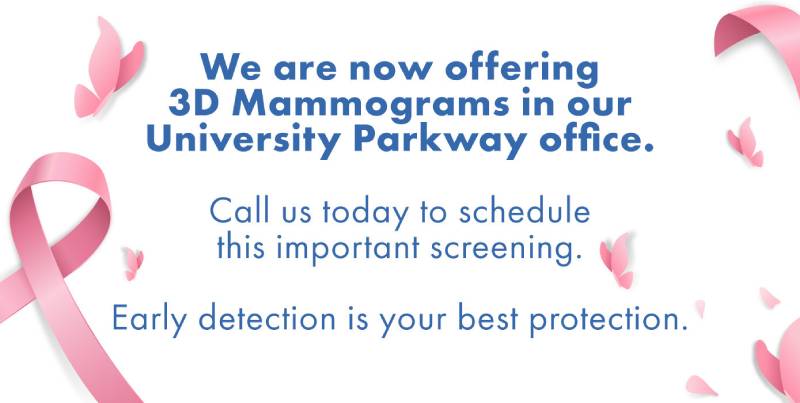Medical facilities such as the University Park OBYGN offer support and medical advice to women of all ages. Pregnancy is a miraculous journey, marked by countless milestones and moments of anticipation. However, amidst the joy, it is essential to be aware of potential complications that may arise, such as preeclampsia.
This condition, though not uncommon, is often misunderstood. Stick around as we unravel the mysteries surrounding preeclampsia, shedding light on its definition, signs of preeclampsia, what causes preeclampsia, and the crucial signs that demand attention.
What is Preeclampsia?

The answer to the question of what is preeclampsia is quite straightforward. Preeclampsia is a complex and potentially dangerous health condition of pregnant women followed by elevated blood pressure and potentially resulting in damaged organs, typically kidneys and the liver, after the 20th week of gestation. This enigmatic condition poses risks to both the expectant mother and the developing fetus, making early recognition and intervention critical. While the exact causes of preeclampsia are not fully understood, certain risk factors, including first-time pregnancies, a history of preeclampsia, and pre-existing health conditions, contribute to its occurrence.
Recognizable preeclampsia symptoms encompass high blood pressure, swelling, and protein in the urine, with the severity of the condition ranging from mild to severe. Timely diagnosis through regular prenatal care, vigilant monitoring, and collaboration with healthcare providers are essential components in managing and mitigating the potential complications associated with preeclampsia.
What Causes Preeclampsia?
The precise causes of preeclampsia remain elusive, making it a topic of continuous research and medical scrutiny. Nonetheless, several risk factors have been identified and they include:
- Placental Issues: Preeclampsia is often associated with problems in the placenta, the organ responsible for supplying nutrients and oxygen to the developing fetus. Insufficient blood flow to the placenta or abnormal development can trigger preeclampsia.
- First-time Pregnancy: Women experiencing their first pregnancy are at a higher risk of developing preeclampsia compared to those who have had previous pregnancies.
- Previous Preeclampsia: A history of preeclampsia in a prior pregnancy increases the likelihood of recurrence in subsequent pregnancies.
- Multiple Gestations: Carrying twins, triplets, or more increases the strain on the placenta, potentially leading to preeclampsia.
- Maternal Age: Women under 20 and over 40 years old are at an increased risk of developing preeclampsia.
- Pre-existing Health Conditions: Chronic conditions such as diabetes, hypertension, and kidney disease elevate the risk of preeclampsia.
- Obesity: Being overweight or obese before pregnancy is a significant risk factor for developing preeclampsia.
- Genetic Factors: A family history of preeclampsia may contribute to an increased risk for the condition.
- Autoimmune Disorders: Certain autoimmune diseases, such as lupus or antiphospholipid syndrome, can elevate the risk of preeclampsia.
- Race/Ethnicity: Women of African descent are generally at a higher risk of developing preeclampsia compared to women of other ethnic backgrounds.
Understanding these risk factors is crucial for early identification and proactive management of preeclampsia during pregnancy. Regular prenatal care and open communication with healthcare providers play a pivotal role in addressing these factors and ensuring the well-being of both the mother and the baby.
Preeclampsia Symptoms: A Red Flag for Expecting Mothers
Recognizing the signs of preeclampsia is paramount for ensuring the well-being of both mother and baby. These signs should not be ignored, as they may signal potential complications. The signs of preeclampsia include:
- High Blood Pressure: Elevated blood pressure, typically exceeding 140/90 mm Hg, is a primary symptom of preeclampsia.
- Swelling (Edema): Swelling, especially in the hands and face, is a common sign of preeclampsia. This occurs due to fluid retention.
- Proteinuria: The presence of excess protein in the urine is a hallmark of preeclampsia, indicating potential kidney dysfunction.
- Headaches: Persistent and severe headaches, often not relieved by over-the-counter medications, can be a symptom of preeclampsia.
- Visual Disturbances: Blurred vision, light sensitivity, or temporary loss of vision may occur in some cases of preeclampsia.
- Abdominal Pain: Pain or discomfort in the upper abdomen, beneath the ribcage, may be indicative of liver involvement.
- Nausea or Vomiting: Persistent nausea or vomiting, particularly in the second half of pregnancy, may be a symptom of preeclampsia.
- Shortness of Breath: Difficulty in breathing or shortness of breath, unrelated to physical exertion, can be a warning sign.
- Rapid Weight Gain: Sudden and significant weight gain, unrelated to dietary changes, may occur due to fluid retention associated with preeclampsia.
- Decreased Urination: A reduction in urine output may indicate compromised kidney function, a common complication of preeclampsia.
- Decreased Platelets: Preeclampsia can affect blood clotting, leading to a decrease in platelet count, which may be detected through blood tests.
- Liver Impairment: Elevated liver enzymes, as detected through blood tests, can be indicative of liver involvement in severe cases of preeclampsia.
Promptly addressing these symptoms is crucial for the early detection and management of preeclampsia. Pregnant individuals experiencing any of these signs should seek immediate medical attention to ensure the well-being of both the mother and the developing fetus. Regular prenatal check-ups with your chosen healthcare provider are essential for monitoring and addressing these symptoms throughout pregnancy.
The Two Faces of Preeclampsia: Mild and Severe
Preeclampsia is a spectrum, ranging from mild to severe forms. Mild preeclampsia may manifest with slight increases in blood pressure and minimal organ damage. However, severe preeclampsia poses a more significant threat, with potentially life-threatening complications such as seizures (eclampsia) and impaired organ function. Timely medical intervention is crucial to manage and mitigate these risks.
Navigating the Complexity: Diagnosis and Monitoring
Diagnosing preeclampsia requires a multi-faceted approach. Healthcare providers conduct regular blood pressure checks, analyze urine for protein levels, and may order blood tests to assess organ function. Regular prenatal care is instrumental in monitoring the progression of the condition, allowing for early detection and intervention when necessary.
Treatment Options: Balancing Act for Mother and Baby

Managing preeclampsia involves a delicate balance to protect both the mother and the developing fetus.
- Delivery of the Baby: The most effective treatment for preeclampsia is the delivery of the baby. This may involve inducing labor or, in severe cases, opting for a cesarean section, depending on the gestational age and the severity of the condition.
- Medications to Lower Blood Pressure: Antihypertensive medications may be prescribed to manage high blood pressure and reduce the risk of complications. Common medications include labetalol and nifedipine.
- Corticosteroids: In situations where early delivery is planned, corticosteroids may be administered to accelerate fetal lung development and reduce the risk of respiratory distress syndrome in the newborn.
- Magnesium Sulfate: This medication is often used to prevent seizures (eclampsia) in women with severe preeclampsia. It is typically administered intravenously.
- Bed Rest: In certain cases, healthcare providers may recommend bed rest to reduce stress on the cardiovascular system and manage preeclampsia symptoms.
Some other treatment options include continuous monitoring of blood pressure, urine protein levels, and other vital signs as well as fluid balance management, usage of anti-seizure medication, hospitalization and blood pressure monitoring at home.
Preventing Preeclampsia: A Work in Progress
Preventing preeclampsia remains a challenge, but certain measures may reduce the risk. Adequate prenatal care, maintaining a healthy lifestyle, including regular exercise and a balanced diet, and managing pre-existing health conditions can contribute to a lower risk of developing this condition.
Call Us!
In conclusion, understanding the signs, symptoms, and causes is crucial for expectant mothers and their healthcare providers. Regular prenatal check-ups are the first step, so call our medical center and schedule a consultation.


